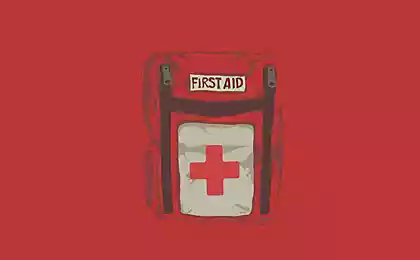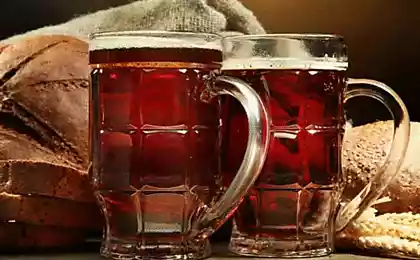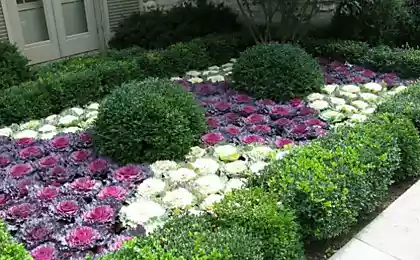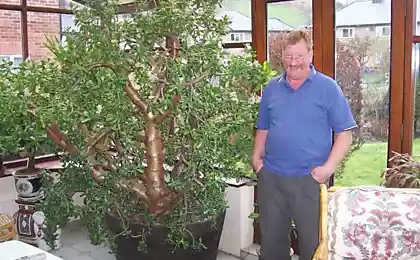742
Guzmania: home care
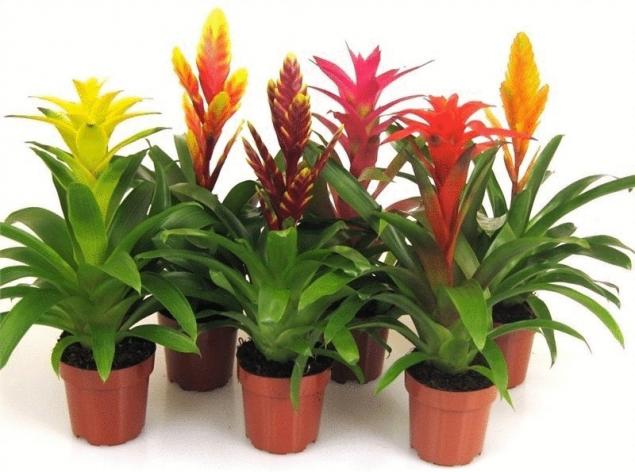
Guzmania homeland is Central and South America. Here, in its natural conditions, the plant grows on the bark of dying trees, not in the form familiar to us – in the earth. The only source of moisture for the plants is moist air.
The genus of these plants has more than 100 species, but in the indoor horticulture widespread just a few guzmania ray, Rondo in a minor and others. Predpochitaete their unpretentiousness in maintenance and pretty appearance.
Description of the plant
Guzmania is a sheet outlet, consisting of rather long grassy leaves. From the center of the rosette usually grows bright and beautiful flower. In natural conditions, this plant can reach 75-80 cm, but in terms of the sill, the plant rarely grows above 40cm.It's all a result of lack of moisture, light and limited conditions for the growth of the root system. Flowers guzmania can be different in their colouring, they can be bright red, maroon, brown and pink, this color looks extremely bright with the bright green leaves of the plant. Many believe this indoor plant is very capricious and demanding to care, but really it's not. For good growth and regular flowering, it is necessary to observe only a few simple conditions, and the plant will delight you with its appearance.
For the most successful care guzmania it must be remembered that this flower comes from the tropics and is an epiphyte, that is, growing not in soil but on other plants. In addition, it is worth mentioning that the guzmania is an annual plant. For many growing her people, this fact to be a surprise.
Guzmania how to care for plants
Temperature mode
In natural conditions the plant grows in the tropics, and to create similar conditions in the apartment is not difficult. Ideal is a temperature between 19 and 25 ° C in summer and 17 to 20⁰С winter. To prevent the lowering of temperatures below 15-16 ° C not worth it, especially for a long period of time, as the plant can freeze and as a consequence will get sick.
The light level
The plant prefers partial shade conditions, they can be placed on window sills on the West or East side. In winter the plant can be moved to the South window-sill, in order to increase the illumination, which in the winter is not enough. But best of all, that the pot was not on the window sill, and next to it, then you need to create a dispersion of light to avoid burns on the leaves.
Watering
Watering this plant should be given special attention. As guzmania refers to bromelain, it needs to be watered, pouring water in the leaf rosette. After this watering, you need to wait 5-10 minutes, then drain the water left in the socket. These plants are not watered at the root in the soil, so watering can be done only in very hot weather and dry air.
Watering plants in the socket should be done in a day or daily in summer, and 1-2 times a week in the winter.
For watering, use a clean pooled water at room temperature.
Mode humidity
This plant came to us from the tropics, and so the high humidity it needs. Optimal for growing guzmania is the humidity in the range from 75 to 85%. For maintaining that humidity can be put near the plant trays with water, use a room humidifier or daily spray guzmania.It is not necessary to pour water in the pan of the plant, otherwise the plant roots can start to rot.
Soil requirements
The soil for plants of this kind have to be specific, as the plant in natural conditions grows in the ground, and uses to power the bark and wood of old trees.
Ideally, in order not to bother much, you should acquire a substrate for bromeliads. If you can't find such a sale, then you need waticorp, sphagnum moss, sand and sod land, one part of each component. Mix well and substrate ready.
Capacity for planting
Do not just take a large container for the planting of this plant, since the root system of this plant is quite small and superficial. For growing guzmania suitable shallow pot small volume. The main thing to establish in the container a good layer of drainage and make drainage holes, this will prevent waterlogging in the pot, and will save the plant from rotting roots.
Feeding and fertilizer
The plant is in dire need of nutrition during active growth and flowering, this period under normal conditions, guzmania lasts from March to September. It is desirable to establish a clear mode and to feeding the plants once every 3 weeks.
For fertilizer plants would be the best solution of mineral and organic fertilizers for bromeliads, it is optimally balanced feeding. The correct selection and dosage of nutrients is very important for guzmania as for fertilizing plants of fertilizer solution is poured into the socket and after 5-10 minutes its remains merge.Remaining solution should be removed from leaves with a damp rag or cloth.
Guzmania care and transplantation
How to repot guzmania
This plant needs a transplant very rarely, to be precise, only two cases in my life. Transplant guzmania need if you bought it in a shop and the plant grows in the transport or if the pot on the mother plant appeared children, and they need to transplant into individual pots. The roots of this plant are small and develop slowly, so frequent stops, the plant is not required, and it may to spend a lifetime in one pot.
The relocation of this plant requires special care, as guzmania are very fragile root system.
For transplanting plants from the shipping pot with a lot of work is not necessary. The first step is to prepare a broad and not very deep pot. The pot should fill drainage layer of 2-3 cm, and then the prepared soil. The soil in the pot an hour before the transplant well watered, and after the set time guzmania carefully extracted from the soil, transferred into the prepared pot and cover the roots with soil. After that, the topsoil should be a good crush, and remains to water the plant and the soil in the pot.
Guzmania transplant children
Kids is the new young plants that grow on the sides of the parent of the adult plant. Transplant children the plant is removed from the old pot, and baby or kids carefully separated from the parent plant. This should be done very carefully, trying not to damage the root system of children. Then the kids planted in individual pots, and the mother plant will not be re-planted as after the Mature plant bloomed and gave birth, it begins to die. So it is just discarded.
Flowering period
This period in the life of guzmania can be called final, because once the plant fades, it dies. The flowering period of this plant occurs within 3-5 years of life, guzmania blooming for a long time – for several months.
The appearance of the flower guzmania suggests that the plant is comfortable, care is organized correctly and it just enough and of light, moisture, and nutrients.
If the plant lives on your windowsill more than five years and no blooms, maybe you are not properly taking care of her, or the plant is experiencing something of a disadvantage.
Guzmania does not bloom:
— if the plant is not enough light, or Vice versa, if the light is too intense;
— if the plant lacks nutrients;
— if the plant is too dry or is experiencing a constant lack of moisture.
Eliminating all the problems mentioned above, you will be able to enjoy the long and bright flowering guzmania.
Reproduction of the guzmania at home
Guzmania propagated only by dividing. Usually guzmania during its flowering forms the root system kids, which by the end of the flowering mother plant is already quite noticeable. Eventually, when baby grows to 10-15cm in height and is ready to transplant, the parent plant dies.
In rare cases, the parent plant can produce several young plants, in the usual case, baby will be one.
There are also cases when the mother plant after the flowering period and otshivaniya kids continues the layer life cycle, but it happens very rarely.published
P. S. And remember, only by changing their consumption — together we change the world! ©
Source: www.art-pen.ru/


